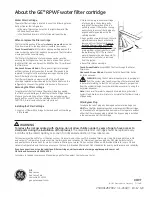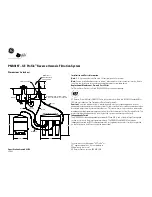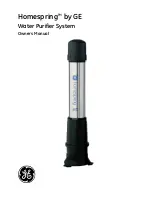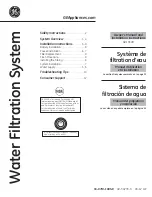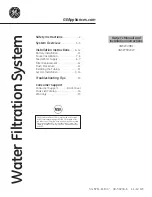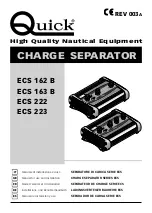
102
Culligan® Series M2 Reverse Osmosis
102
Cat. No. 01023095
Appendix B Basic Principles
Reverse Osmosis
In order to understand reverse osmosis, we must first define osmosis. Osmosis is the passage of a liquid through a semi-
permeable membrane. A semi-permeable membrane is a membrane which allows one component of a solution to pass
through it and not the others. In osmosis, there is a tendency for a liquid to go from an area of less concentration to an
area of more concentration through a semi-permeable membrane. Figure 62 shows the osmotic process.
Semi-Permeable
Membrane
Dilute
Solution
Passage of
Water
Concentrated
Solution
Figure 62.
Osmotic process.
If pressure is applied to the concentrated solution, reverse osmosis will take place. The pressure causes a flow through
the semi-permeable membrane into the dilute solution. The semi-permeable membrane acts as a barrier to ions and does
not allow them to pass through into the dilute solution. When applied to water, this means that the product water has a
reduced total dissolved solids content as a result of the passage of water molecules through the membrane while the
mineral ions are rejected. See Figure 63.
Semi-Permeable
Membrane
Dilute
Solution
Passage of
Water
Concentrated
Solution
Pressure
Figure 63.
Effect of pressure on reverse osmosis.
Rejection and Recovery
Feed
Product
Concentrate
Figure 64.
Feed water product stream and concentrate stream.
During the process of reverse osmosis, some of the water has its dissolved solids content reduced by approximately 99%.
This high quality product water is sent to service































